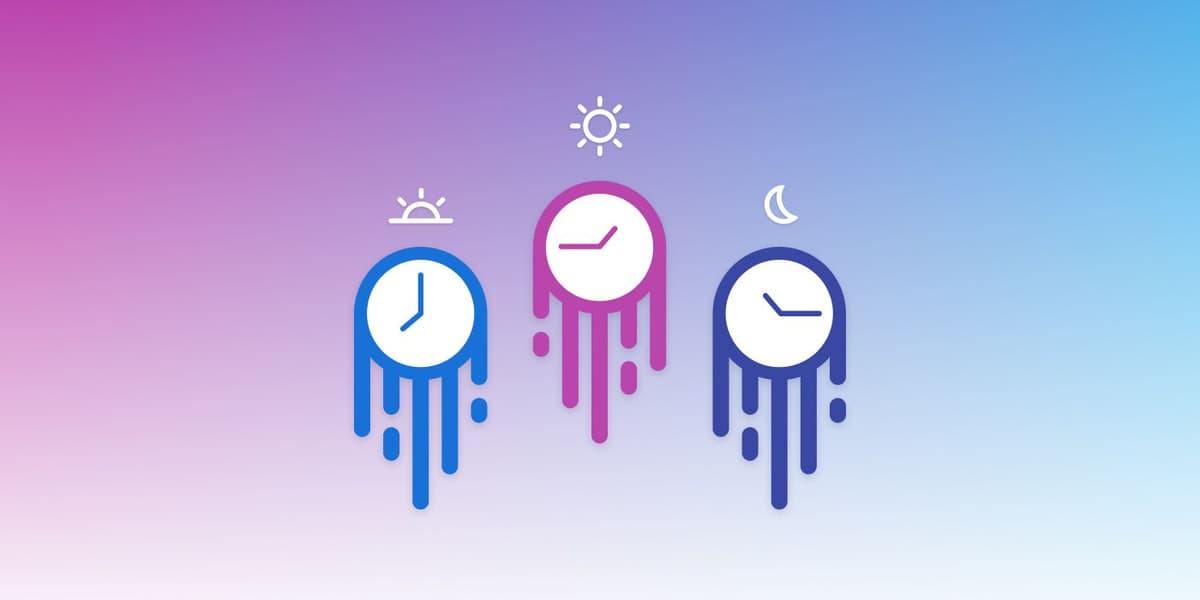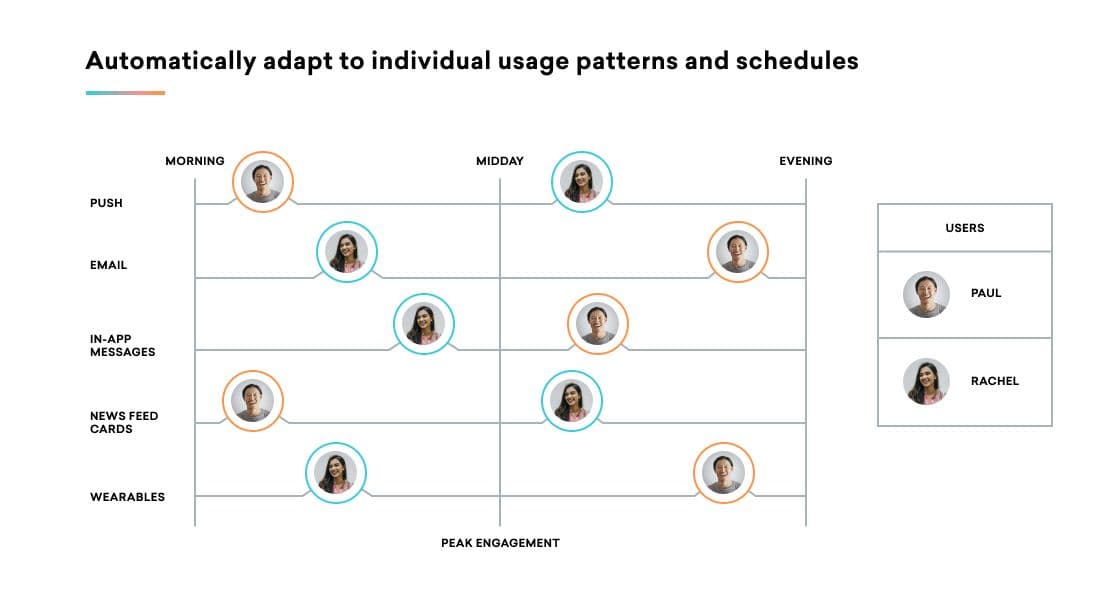Understanding Delivery-Time Personalization
Published on December 17, 2020/Last edited on December 17, 2020/3 min read


Adam Swiderski
WriterFor marketers, understanding the ebbs and flows in user engagement behavior is an important part of making sure customers receive marketing messaging at a time and in a place when they’re most likely to be receptive to it. The trick, however, is that there is no one pattern that applies to everyone. Some consumers might read their email first thing after they wake up, while others might spread activity out throughout the day, or catch up on push notifications during lunch. Thankfully, brands aren’t left to guess when those moments might be and apply a one-size-fits-all solution. Thanks to delivery-time personalization, messaging campaigns can be tailored to reach individual users at exactly the right moment.
Don’t Lose Track of Time
When we think of personalization, it’s often easy to focus on the “how” and “what” of messaging. Does a consumer respond more to email or push notifications? What type of content will most drive engagement and retention? What wording or imagery will best grab attention? When an individual tends to interact with messaging, however, can prove just as important. Inboxes and notification queues are overflowing these days, and research has shown that 78% of consumers would opt out of receiving messaging or uninstall an app if they feel what they’re getting is intrusive.

Fortunately, identifying temporal user tendencies is both very possible and very effective. Thanks to platforms like Braze, brands can drill down into the ways in which their customers tend to interact with different types of messaging at different times of the day. If, for example, one consumer is more likely to read and click on content within an email in the morning, but another tends to do so while they’re watching primetime television at night, a brand can tailor its campaign so that each receives the message in question when they are most likely to see and interact with it, while a third user who’s not so hot on email but engages with push notifications often in the afternoon can be reached that particular way at that particular time.
Make the Most of Time
Of course, delivery-time personalization isn’t a catch-all solution. Promotional campaigns that are tied to specific user actions, or linked to particular thematic moments like a holiday sale, wouldn’t benefit being sent later rather than sooner. It’s up to the individual marketer to determine which messages need to be addressed urgently, and which would be best served by delivery-time personalization.
The good news is that tools like Intelligent Timing take the guesswork out of determining when it’s best to send certain messages, utilizing comprehensive data analysis to create a profile for individual consumers that speaks to their personal habits.
Final Thoughts
Just as no one messaging channel is going to be equally effective for every consumer, no uniform delivery schedule is going to catch every consumer at their most ready to engage. Tracking time as a variable in user interaction with messaging can ensure that no amount of promotional effort is wasted hitting someone up at a moment when they’re going to feel inconvenienced.
For more on how dynamic personalization can maximize your messaging’s reach, penetration, and effectiveness, be sure to check out the Braze Personalization Guide.
Related Tags
Be Absolutely Engaging.™
Sign up for regular updates from Braze.


